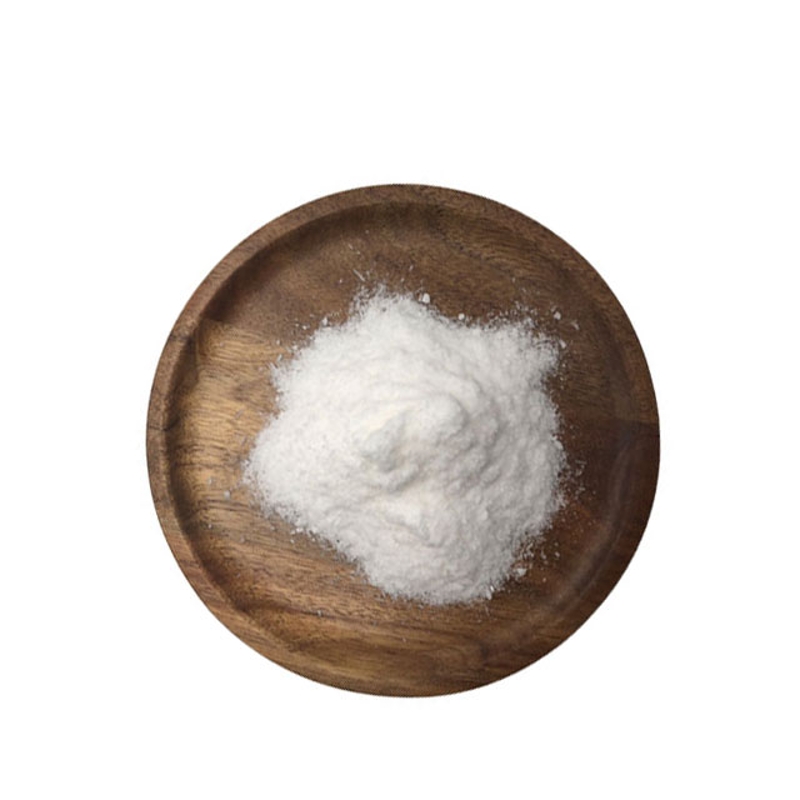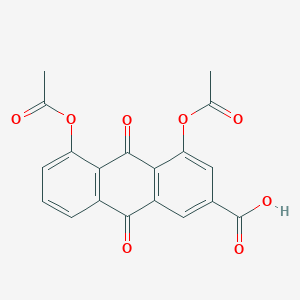-
Categories
-
Pharmaceutical Intermediates
-
Active Pharmaceutical Ingredients
-
Food Additives
- Industrial Coatings
- Agrochemicals
- Dyes and Pigments
- Surfactant
- Flavors and Fragrances
- Chemical Reagents
- Catalyst and Auxiliary
- Natural Products
- Inorganic Chemistry
-
Organic Chemistry
-
Biochemical Engineering
- Analytical Chemistry
- Cosmetic Ingredient
-
Pharmaceutical Intermediates
Promotion
ECHEMI Mall
Wholesale
Weekly Price
Exhibition
News
-
Trade Service
With the outbreak of H1N1, polio, Ebola, Zika and COVID-19, infections caused by viruses have attracted more and more attention.
In addition, seasonal influenza has caused severe morbidity and mortality worldwide, and caused huge economic losses.
Therefore, it is very important to clarify the molecular mechanism of antiviral infection.
Recently, Associate Researcher Li Yiyuan from School of Life Sciences and Technology of Southeast University and Professor Jin Jin’s laboratory of Zhejiang University published a research paper entitled Single-nucleotide methylation specifically represses type I interferon in antiviral innate immunity in the Journal of Experimental Medicine (JEM), revealing DNA methylation plays an important role and molecular mechanism in regulating antiviral innate immunity.
The host produces type I and type II interferons (IFN) to defend against viral infections and regulate immune responses.
Viruses are divided into DNA and RNA viruses.
RNA viruses are recognized by Toll-like receptors and RIG-like receptors.
DNA viruses are recognized by cGAS, AIM2, IFI16, etc.
These receptors trigger a series of cascade signals to activate the transcription factors NF-κB, IRF3 or IRF7 and lead to the rapid production of subsequent type I interferons.
Once the type I interferon is produced, it sends a signal through the type I interferon receptor (IFNAR), which in turn leads to phosphorylation of STAT2 and STAT1, and finally leads to the expression of ISGs stimulated by the interferon.
These early type I interferons include IFN-α and IFN-β.
They induce the antiviral response of infected cells and target cells and activate innate immune cells, thereby controlling virus replication and activating the adaptive immune response, and finally clearing the virus and producing Memory cells.
Type II interferon (IFN-γ) is mainly produced by natural killer cells in the antiviral natural immune response process, and depends on the phosphorylation of STAT4, and then promotes the homodimerization and phosphorylation of STAT1 through IFN-γ receptors.
Similarly, IFN-γ can also affect the function of innate immune cells and activate the antiviral ability of adaptive immunity.
Although the above-mentioned signal transduction and transcription factors play an important role in the production of interferon, in recent years, more and more studies have found that DNA methylation is involved in the regulation of interferon.
DNA methylation is regulated by enzymes that mediate DNA methylation and demethylation.
During embryo formation, DNA methylation is formed by DNA de novo methylation mediated by DNMT3a and DNMT3b.
During cell division, UHRF1 recruits DNMT1 to hemimethylated DNA to maintain DNA methylation during mitosis.
DNA demethylation is oxidized to an intermediate product by the TET family, and then reduced to unmodified cytosine by base excision repair.
The mutation of Uhrf1 or Dnmt1 in zebrafish leads to the induced expression of class I retrotransposons and activation of cytoplasmic DNA virus receptors, which in turn promotes the increase of interferon expression through the Sting signal pathway.
TET3 inhibits the transcription of type I IFN by recruiting histone deacetylase 1 (HDAC1) and transcription co-repressor (SIN3A) to the promoter region of Ifnb1.
This process does not depend on DNA demethylation.
Another study reported that 5-azacytidine (AZA), a DNA methylation inhibitor, up-regulates the transcription of endogenous retroviruses through DNA demethylation, and then promotes interference through RNA receptor-mediated signaling pathways The secretion of IFN-b.
However, unlike the demethylation caused by AZA treatment, the expression of endogenous retrovirus in endogenous demethylated tumors is not positively correlated with the expression of immune activity markers, but is negatively correlated, which shows that IFN-a The inactivation of the /b signal erased the immunostimulatory effects of endogenous retroviral expression caused by genome demethylation.
Therefore, exploring the different mechanisms of epigenetic therapy has important potential value.
This work found an unexpected role for Uhrf1 in the pathogenic properties of different influenza virus strains.
Compared with H5N1, H1N1 influenza virus causes a significant decrease in Uhrf1 mRNA levels and increases the production of IFN-I.
The deletion of Uhrf1 in myeloid cells further reveals the specific negative effects of Uhrf1 in virus-induced death and IFN-I induction, but the lack of Uhrf1 does not affect the activity of key signal components in this signaling pathway.
Through whole genome bisulfite sequencing (WGBS), the research group found that the production of IFN-I regulated by uhrf1 is mainly mediated by single nucleotide methylation in the Ifnb promoter region.
By using this single-nucleotide-specific mutation knock-in mouse and dCas9-Tet1 demethylation tool, it was proved that targeted demethylation at a single methylation site can enhance IRF3 recruitment and promote IFN-I expression.
The research team determined that single CpG nucleotide methylation is the basic mechanism that controls the induction and antiviral immunity of human and mouse IFN-I.
By targeting this DNA methylation, the team produced a new adjuvant to induce specific demethylation of the Ifnb promoter, which significantly improved the effectiveness of influenza vaccines.
When different influenza A virus strains are infected, this study provides functional insights into the reduction of methylation, provides genetic evidence that Uhrf1 expression is inhibited during influenza A virus infection, and explains how external pressure is epigenetic Angle modulation innate immunity provides an example.
The results of this study also confirmed the potential function of single nucleotide methylation in controlling the expression of IFN-I.
This discovery not only provides important insights into the mechanism that regulates IFN-I production, but also hints at a potential drug target by modifying DNA methylation.
Dr.
Gao Zhengjun and doctoral student Li Wenping are the co-first authors, and associate researcher Li Yiyuan and Professor Jin Jin are the co-corresponding authors of this article.
Original link: https://rupress.
org/jem/article/218/3/e20201798/211817/Single-nucleotide-methylation-specifically
In addition, seasonal influenza has caused severe morbidity and mortality worldwide, and caused huge economic losses.
Therefore, it is very important to clarify the molecular mechanism of antiviral infection.
Recently, Associate Researcher Li Yiyuan from School of Life Sciences and Technology of Southeast University and Professor Jin Jin’s laboratory of Zhejiang University published a research paper entitled Single-nucleotide methylation specifically represses type I interferon in antiviral innate immunity in the Journal of Experimental Medicine (JEM), revealing DNA methylation plays an important role and molecular mechanism in regulating antiviral innate immunity.
The host produces type I and type II interferons (IFN) to defend against viral infections and regulate immune responses.
Viruses are divided into DNA and RNA viruses.
RNA viruses are recognized by Toll-like receptors and RIG-like receptors.
DNA viruses are recognized by cGAS, AIM2, IFI16, etc.
These receptors trigger a series of cascade signals to activate the transcription factors NF-κB, IRF3 or IRF7 and lead to the rapid production of subsequent type I interferons.
Once the type I interferon is produced, it sends a signal through the type I interferon receptor (IFNAR), which in turn leads to phosphorylation of STAT2 and STAT1, and finally leads to the expression of ISGs stimulated by the interferon.
These early type I interferons include IFN-α and IFN-β.
They induce the antiviral response of infected cells and target cells and activate innate immune cells, thereby controlling virus replication and activating the adaptive immune response, and finally clearing the virus and producing Memory cells.
Type II interferon (IFN-γ) is mainly produced by natural killer cells in the antiviral natural immune response process, and depends on the phosphorylation of STAT4, and then promotes the homodimerization and phosphorylation of STAT1 through IFN-γ receptors.
Similarly, IFN-γ can also affect the function of innate immune cells and activate the antiviral ability of adaptive immunity.
Although the above-mentioned signal transduction and transcription factors play an important role in the production of interferon, in recent years, more and more studies have found that DNA methylation is involved in the regulation of interferon.
DNA methylation is regulated by enzymes that mediate DNA methylation and demethylation.
During embryo formation, DNA methylation is formed by DNA de novo methylation mediated by DNMT3a and DNMT3b.
During cell division, UHRF1 recruits DNMT1 to hemimethylated DNA to maintain DNA methylation during mitosis.
DNA demethylation is oxidized to an intermediate product by the TET family, and then reduced to unmodified cytosine by base excision repair.
The mutation of Uhrf1 or Dnmt1 in zebrafish leads to the induced expression of class I retrotransposons and activation of cytoplasmic DNA virus receptors, which in turn promotes the increase of interferon expression through the Sting signal pathway.
TET3 inhibits the transcription of type I IFN by recruiting histone deacetylase 1 (HDAC1) and transcription co-repressor (SIN3A) to the promoter region of Ifnb1.
This process does not depend on DNA demethylation.
Another study reported that 5-azacytidine (AZA), a DNA methylation inhibitor, up-regulates the transcription of endogenous retroviruses through DNA demethylation, and then promotes interference through RNA receptor-mediated signaling pathways The secretion of IFN-b.
However, unlike the demethylation caused by AZA treatment, the expression of endogenous retrovirus in endogenous demethylated tumors is not positively correlated with the expression of immune activity markers, but is negatively correlated, which shows that IFN-a The inactivation of the /b signal erased the immunostimulatory effects of endogenous retroviral expression caused by genome demethylation.
Therefore, exploring the different mechanisms of epigenetic therapy has important potential value.
This work found an unexpected role for Uhrf1 in the pathogenic properties of different influenza virus strains.
Compared with H5N1, H1N1 influenza virus causes a significant decrease in Uhrf1 mRNA levels and increases the production of IFN-I.
The deletion of Uhrf1 in myeloid cells further reveals the specific negative effects of Uhrf1 in virus-induced death and IFN-I induction, but the lack of Uhrf1 does not affect the activity of key signal components in this signaling pathway.
Through whole genome bisulfite sequencing (WGBS), the research group found that the production of IFN-I regulated by uhrf1 is mainly mediated by single nucleotide methylation in the Ifnb promoter region.
By using this single-nucleotide-specific mutation knock-in mouse and dCas9-Tet1 demethylation tool, it was proved that targeted demethylation at a single methylation site can enhance IRF3 recruitment and promote IFN-I expression.
The research team determined that single CpG nucleotide methylation is the basic mechanism that controls the induction and antiviral immunity of human and mouse IFN-I.
By targeting this DNA methylation, the team produced a new adjuvant to induce specific demethylation of the Ifnb promoter, which significantly improved the effectiveness of influenza vaccines.
When different influenza A virus strains are infected, this study provides functional insights into the reduction of methylation, provides genetic evidence that Uhrf1 expression is inhibited during influenza A virus infection, and explains how external pressure is epigenetic Angle modulation innate immunity provides an example.
The results of this study also confirmed the potential function of single nucleotide methylation in controlling the expression of IFN-I.
This discovery not only provides important insights into the mechanism that regulates IFN-I production, but also hints at a potential drug target by modifying DNA methylation.
Dr.
Gao Zhengjun and doctoral student Li Wenping are the co-first authors, and associate researcher Li Yiyuan and Professor Jin Jin are the co-corresponding authors of this article.
Original link: https://rupress.
org/jem/article/218/3/e20201798/211817/Single-nucleotide-methylation-specifically







